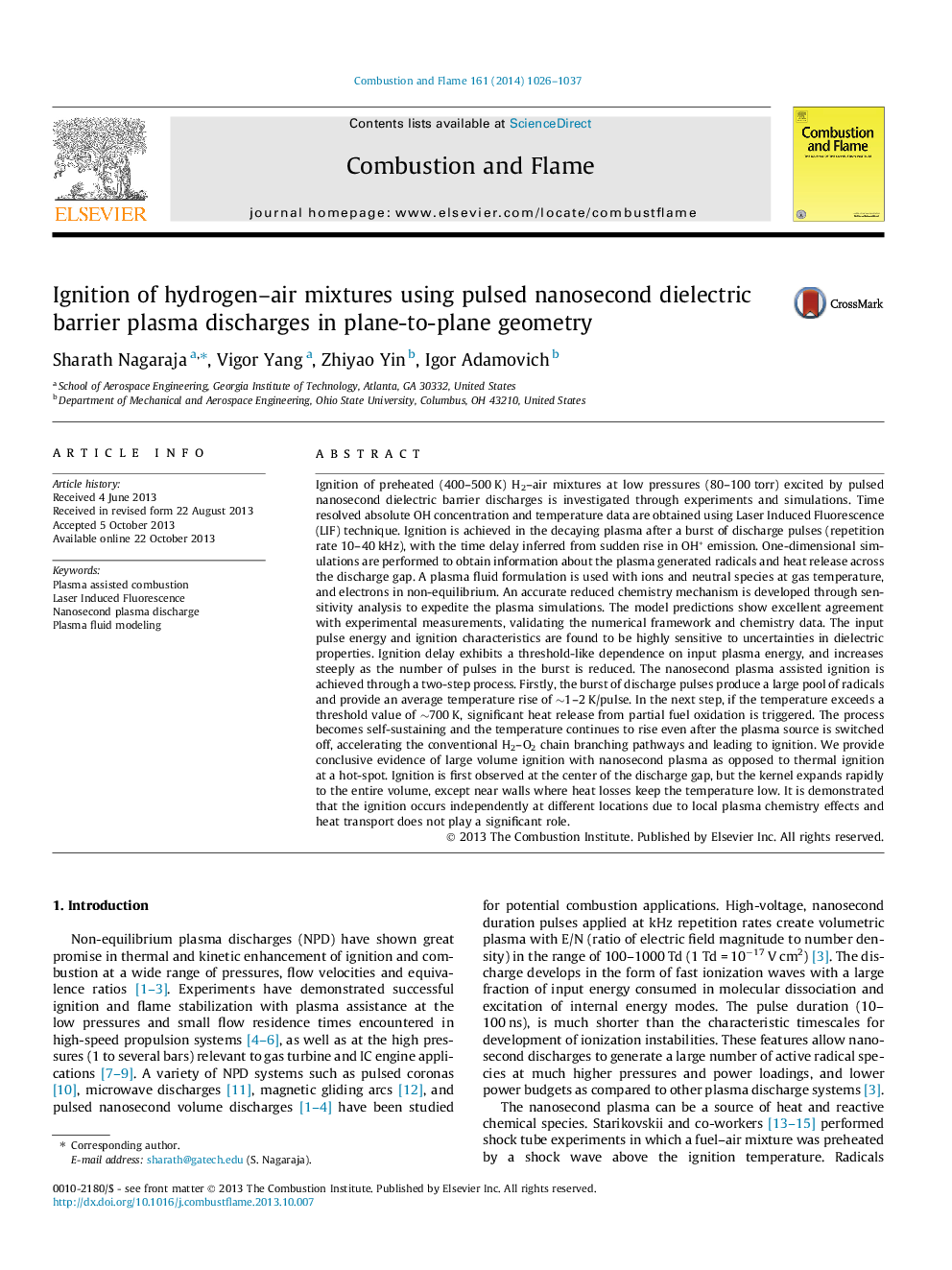| Article ID | Journal | Published Year | Pages | File Type |
|---|---|---|---|---|
| 168712 | Combustion and Flame | 2014 | 12 Pages |
Ignition of preheated (400–500 K) H2–air mixtures at low pressures (80–100 torr) excited by pulsed nanosecond dielectric barrier discharges is investigated through experiments and simulations. Time resolved absolute OH concentration and temperature data are obtained using Laser Induced Fluorescence (LIF) technique. Ignition is achieved in the decaying plasma after a burst of discharge pulses (repetition rate 10–40 kHz), with the time delay inferred from sudden rise in OH* emission. One-dimensional simulations are performed to obtain information about the plasma generated radicals and heat release across the discharge gap. A plasma fluid formulation is used with ions and neutral species at gas temperature, and electrons in non-equilibrium. An accurate reduced chemistry mechanism is developed through sensitivity analysis to expedite the plasma simulations. The model predictions show excellent agreement with experimental measurements, validating the numerical framework and chemistry data. The input pulse energy and ignition characteristics are found to be highly sensitive to uncertainties in dielectric properties. Ignition delay exhibits a threshold-like dependence on input plasma energy, and increases steeply as the number of pulses in the burst is reduced. The nanosecond plasma assisted ignition is achieved through a two-step process. Firstly, the burst of discharge pulses produce a large pool of radicals and provide an average temperature rise of ∼1–2 K/pulse. In the next step, if the temperature exceeds a threshold value of ∼700 K, significant heat release from partial fuel oxidation is triggered. The process becomes self-sustaining and the temperature continues to rise even after the plasma source is switched off, accelerating the conventional H2–O2 chain branching pathways and leading to ignition. We provide conclusive evidence of large volume ignition with nanosecond plasma as opposed to thermal ignition at a hot-spot. Ignition is first observed at the center of the discharge gap, but the kernel expands rapidly to the entire volume, except near walls where heat losses keep the temperature low. It is demonstrated that the ignition occurs independently at different locations due to local plasma chemistry effects and heat transport does not play a significant role.
